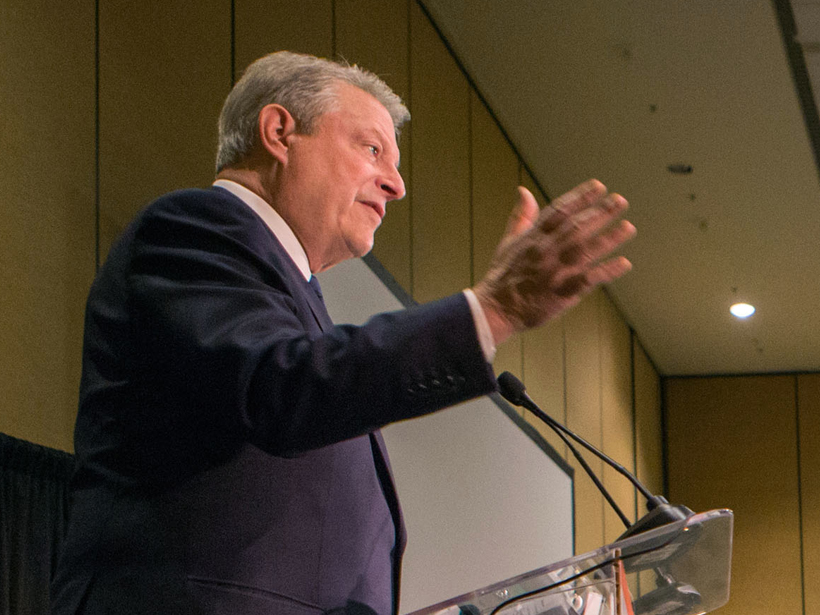Stating that the world is in “a danger zone” and “a race against time,” former U.S. Vice President Al Gore said in a speech this afternoon that the recent climate negotiations in Paris were a great success, but he implored more action “to solve the climate crisis.”
“We need to put aside many other things and focus on this while there is time,” Gore said.
“The good news is that 195 countries all agreed on a plan of action that, while far from ideal, nevertheless sets in motion a process of change that gives us an excellent chance of accelerating the measures that could actually bring us to the point where we can start to stabilize the climate,” Gore said. He spoke about climate change and Earth observations from space at the annual Fall Meeting of the American Geophysical Union (AGU) in San Francisco, Calif.
“The arrival of a proto-consensus of the world community on the need to take dramatic action to decarbonize the global economy has taken longer than anybody thought it would,” Gore said, adding that he hopes there is faster progress.
“We need to go to [a] DEFCON” high level of alert to deal with climate change, Gore said, referring to a U.S. Armed Forces defense readiness condition. “We need to put aside many other things and focus on this while there is time.” He said that, based on what actions are taken, future generations will ask why they have inherited a degraded world. “But if we rise to this challenge, as I believe we are beginning to do, I want them to look back and ask of us, ‘how did you find the moral judgment to do the right thing?’”
Observations from DSCOVR
Gore, along with a panel of experts, also focused on Earth observations from space including those by the Deep Space Climate Observatory (DSCOVR) satellite, a project Gore was involved with as vice president. DSCOVR was launched by NASA on 11 February 2015 and is now operated by the National Oceanic and Atmospheric Administration. DSCOVR orbits Earth at Lagrange point 1, L1, a neutral gravity point between the Sun and Earth, about 1.5 million kilometers from Earth. The orbit allows the satellite to maintain a fixed position relative to Earth and constantly have a sunlit view of the disk of the Earth.
Gore said that scrutiny of Earth’s features and regions by DSCOVR or other satellites—or platforms such as submarines—can help people to better monitor and understand the planet and provide warnings about dangers from extreme space weather or other hazards.
Whereas DSCOVR takes a series of images of the Earth each day, Gore speculated about potential instrumentation on a future similar satellite. “Wouldn’t it be great to have a continuous live color TV image of Earth all the time? I think that would be pretty cool,” he said.
To watch Gore’s speech, click here to register (free) for AGU On-Demand videos from the meeting and search the listings for Gore’s talk.
—Randy Showstack, Staff Writer
Citation: Showstack, R. (2015), Gore calls Paris a good start on climate, but more action needed, Eos, 96, doi:10.1029/2015EO041987. Published on 16 December 2015.
Text © 2015. The authors. CC BY-NC 3.0
Except where otherwise noted, images are subject to copyright. Any reuse without express permission from the copyright owner is prohibited.

